
Home renovations can feel like a surefire way to boost your property’s appeal, but some additions that seemed brilliant at the time now make potential buyers cringe and reach for their calculators. What once represented the height of style—from bold geometric patterns to statement lighting—can quickly transform from selling point to deal breaker when trends shift.
In order to come up with the very specific design ideas, we create most designs with the assistance of state-of-the-art AI interior design software.
The key to maintaining your home’s market value lies in recognizing which trendy additions have crossed the line from stylish to dated, potentially costing you thousands when it’s time to sell. Whether it’s outdated fixtures, bold design choices that scream a particular decade, or functional elements that no longer serve modern lifestyles, these popular home additions can actually make buyers walk away rather than pull out their checkbooks. Understanding which elements fall into this category helps you make smarter renovation decisions and avoid the costly mistake of following trends that age poorly.
Please note the imagery in this article, in an effort to provide highly specific examples, was created with the assistance of AI.
27. Fluorescent lighting tubes
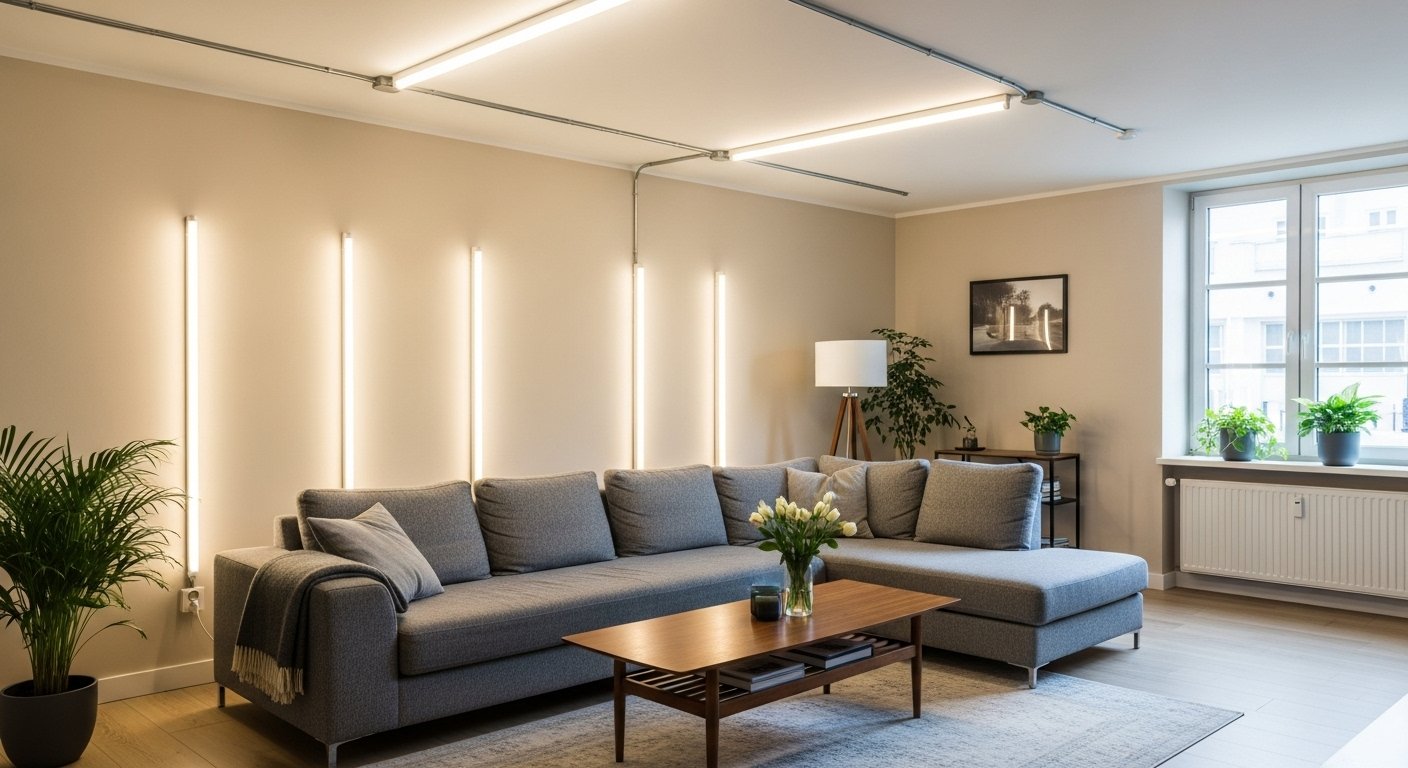
Your kitchen’s fluorescent lighting is broadcasting one message loud and clear: this house hasn’t been updated since the 1980s. Those harsh fluorescent fixtures wash out rooms and create a clinical feeling that makes spaces feel less inviting.
Modern buyers walk into your kitchen and immediately start calculating replacement costs. They’re not seeing energy efficiency – they’re seeing that unflattering buzz and flicker that gives people headaches.
The rectangular plastic covers have likely yellowed over time, making your ceiling look dingy. Even worse, when one tube burns out, you get that annoying strobing effect that screams “maintenance needed.”
Sure, fluorescent tubes are energy efficient, but today’s LED alternatives offer the same benefits with better light quality. Buyers know this, and they’re already mentally replacing your entire lighting scheme.
Your outdated fluorescent fixtures are essentially a neon sign advertising that major updates are required. Smart buyers see them as a red flag indicating other systems might be equally behind the times.
26. Hanging plants in macrame holders

Your grandmother’s macrame plant hangers are making a comeback, but not in the way you’d hope. These knotted rope contraptions scream 1970s bohemian chic in all the wrong ways.
Modern buyers expect sleek, minimalist plant displays. Your macrame plant hangers clash with contemporary design sensibilities that favor clean lines and subtle accents.
The problem isn’t plants themselves. It’s the dated presentation that makes your space feel stuck in a time warp.
Macrame hangers collect dust in their intricate knots. They’re maintenance nightmares that look increasingly shabby over time, especially when exposed to humidity from watering.
Young buyers associate these hanging plant displays with outdated décor trends. They’d rather invest in modern wall-mounted planters or stylish plant stands.
Your carefully curated plant collection deserves better than rope prison cells. Buyers will mentally subtract the cost of replacing these relics from their offer.
Save yourself the headache and swap them for contemporary alternatives before listing your home.
25. Pastel color schemes throughout
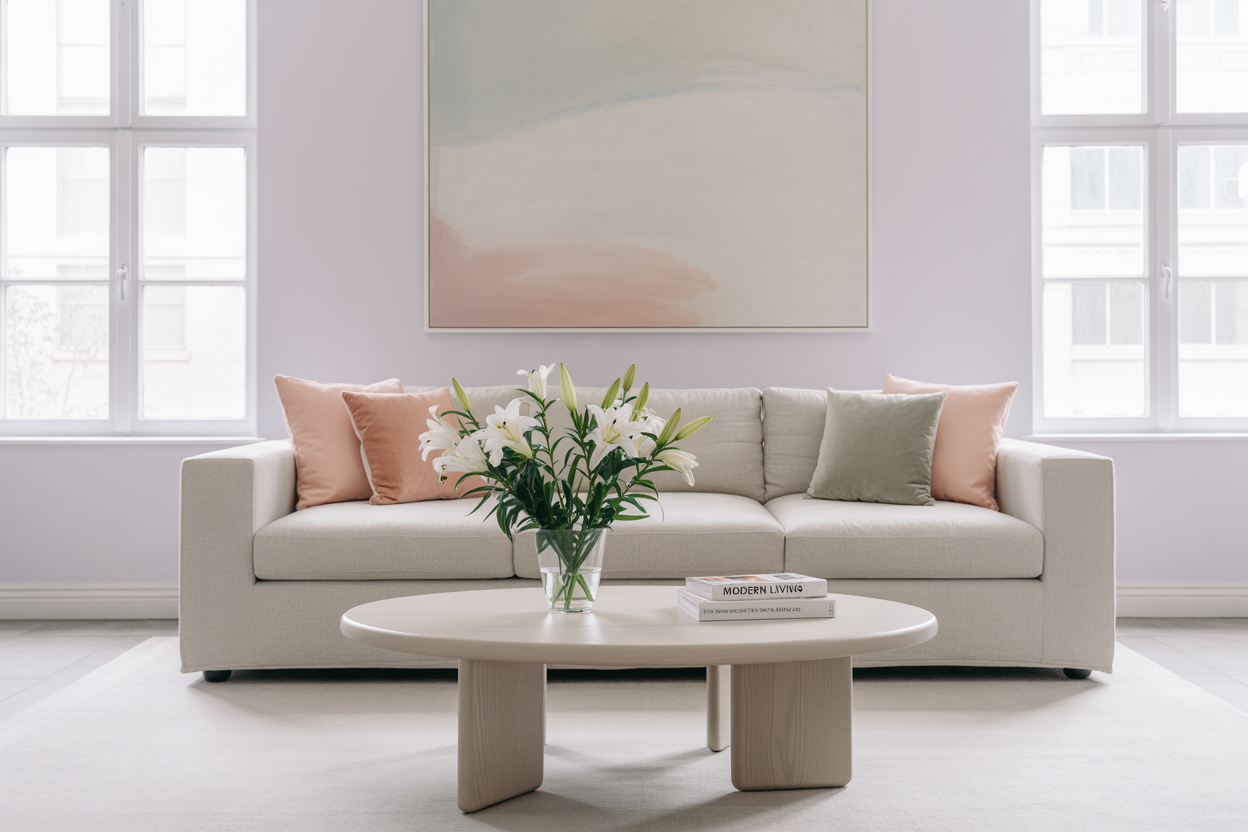
While pastels had their moment during the millennial pink craze, using them throughout your entire home now screams outdated to potential buyers. What once felt fresh and trendy has become tired and juvenile.
Pastel colors are specifically mentioned as outdated paint choices that can make your home look dated in 2025. Buyers want spaces that feel sophisticated and current, not like they’re walking through a candy store.
The biggest problem isn’t pastels themselves—it’s the heavy-handed approach. When you’ve painted every room in soft pinks, lavenders, and mint greens, you’ve created a design scheme that feels more appropriate for a nursery than a grown-up home.
Modern buyers prefer stronger, more decisive color choices that show confidence in design decisions. They want to see colors that will stand the test of time, not fade into irrelevance like last season’s Instagram filter.
If you’re selling, consider repainting those pastel walls in more contemporary neutrals or bolder accent colors. Your potential buyers will thank you for sparing them the redecorating headache.
24. Plastic laminate flooring with bold patterns
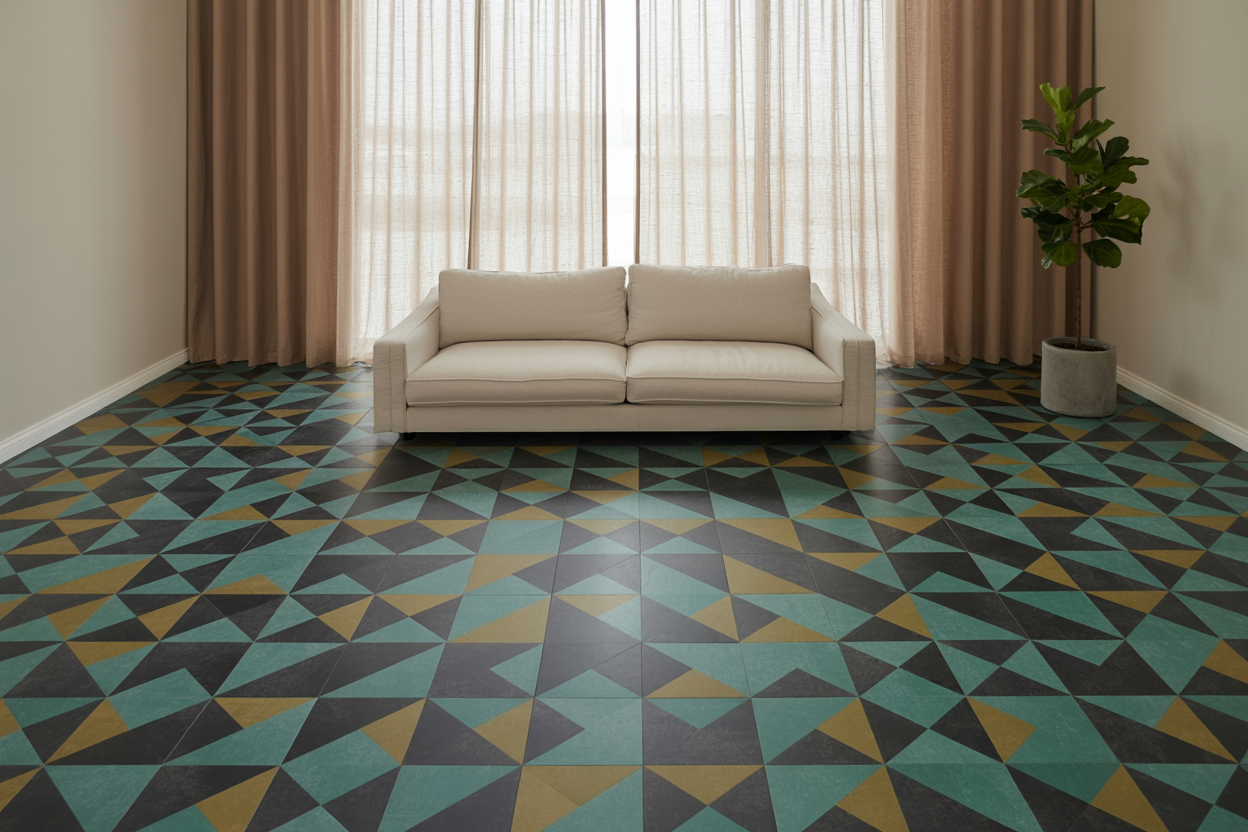
Your zebra-striped laminate floor might have seemed edgy in 2010, but today’s buyers see it as a costly mistake they’ll need to fix. Bold geometric patterns and loud designs create visual chaos that overwhelms potential purchasers.
Geometric patterns and bold designs are trending in 2025, but there’s a fine line between stylish and garish. Your neon chevron or fake marble swirls cross that line into tackiness.
These busy patterns make rooms feel smaller and dated. They also limit furniture choices since everything must work around your floor’s wild personality.
Buyers worry about matching décor to your statement flooring. They see dollar signs when imagining replacement costs, especially if the pattern extends throughout multiple rooms.
The shine and artificial texture of cheap laminate becomes even more obvious with bold patterns. What seemed like a design statement becomes a glaring reminder of budget constraints.
Neutral laminate options exist that buyers find acceptable. Your decision to go bold with plastic flooring signals questionable taste that makes buyers wonder what other “creative” choices await them.
23. Built-in entertainment centers sized for CRT TVs

Your beautiful built-in entertainment center from 1995 now screams “time capsule” louder than a dial-up modem. Those deep, boxy cavities that once perfectly housed your 32-inch tube TV now look like architectural black holes.
Modern flat-screen TVs get completely swallowed by these cavernous openings. The proportions are all wrong, leaving awkward gaps that no amount of decorative objects can fill gracefully.
Custom built-in entertainment centers were expensive investments back in the day. Unfortunately, they’re now expensive problems that make your living room look frozen in time.
The chunky proportions dominate wall space in ways that feel heavy and dated. Today’s buyers want clean lines and flexibility, not permanent fixtures built around obsolete technology.
Your entertainment center’s deep shelving also limits furniture placement options. Modern TV entertainment center designs prioritize sleek profiles and adaptable storage solutions.
Potential buyers see these built-ins as costly renovation projects rather than valuable features. They imagine the expense and hassle of removing custom millwork that’s permanently attached to your walls.
The good news? You can often retrofit these spaces with floating shelves or convert them into attractive display areas for books and decor.
22. Raised hearths extending into the room

Your raised hearth might have seemed like a cozy idea in 1985, but today’s buyers see it as a literal stumbling block. These brick or stone platforms jutting into living spaces create awkward furniture arrangements and pose safety hazards.
Modern homeowners prefer sleek, flush fireplace designs that don’t dominate the room. Your extended hearth eats up valuable floor space and makes the area feel cramped and dated.
Contemporary hearth designs focus on clean lines rather than bulky protrusions. Buyers want flexible spaces where they can arrange furniture freely without working around a concrete obstacle course.
The raised platform also screams “grandmother’s house” to younger buyers who’ve grown up with minimalist design trends. They see maintenance headaches and remodeling costs rather than charm.
Your hearth extension forces everyone to navigate around it, creating an unwelcome focal point for all the wrong reasons. Smart buyers recognize this feature will need expensive renovation to create the open, flowing spaces they actually want.
Consider this your wake-up call to level with reality – literally.
21. Glass block windows

Glass block windows scream “1980s bathroom renovation” louder than neon leg warmers. These chunky, translucent squares were trendy in the 1980s but now serve as an instant age indicator for your home.
You’ll find these blocky eyesores most commonly in basements and bathrooms. They were popular because they offered privacy while letting in light. Smart idea, unfortunate execution.
The problem isn’t just their dated appearance. Glass block windows are now considered outdated features that homebuyers avoid. They signal to potential buyers that your home hasn’t been updated in decades.
Modern alternatives like frosted or textured glass panels achieve the same privacy goals without the retro baggage. These sleeker options maintain that clean, contemporary look buyers expect.
Some design enthusiasts claim glass blocks are making a comeback, but don’t bet your home’s marketability on it. The internet response to this potential revival has been less than enthusiastic.
Your home’s curb appeal depends on looking current, not nostalgic for questionable design choices.
20. Floral print sofas from the 90s

Your grandmother’s cabbage rose sofa might hold sentimental value, but it’s sending buyers running faster than you can say “chintz.” These floral fabric pieces dominated the 1990s and haven’t aged gracefully.
The oversized blooms and busy patterns that once felt cozy now scream outdated. Buyers walk into your living room and immediately start calculating replacement costs instead of imagining movie nights.
While some floral sofas are making a modern comeback, your 90s version with its bold, busy prints falls into the “stuck in the past” category. The patterns are too loud and the color combinations too jarring for today’s cleaner aesthetic preferences.
These pieces also tend to show their age through fading and wear patterns that highlight every coffee spill from the Clinton administration. Your potential buyers aren’t feeling nostalgic—they’re feeling overwhelmed by the thought of coordinating décor around such a dominant piece.
Consider neutral upholstery that lets buyers envision their own style instead of wrestling with your floral statement piece.
19. Funky wallpaper murals
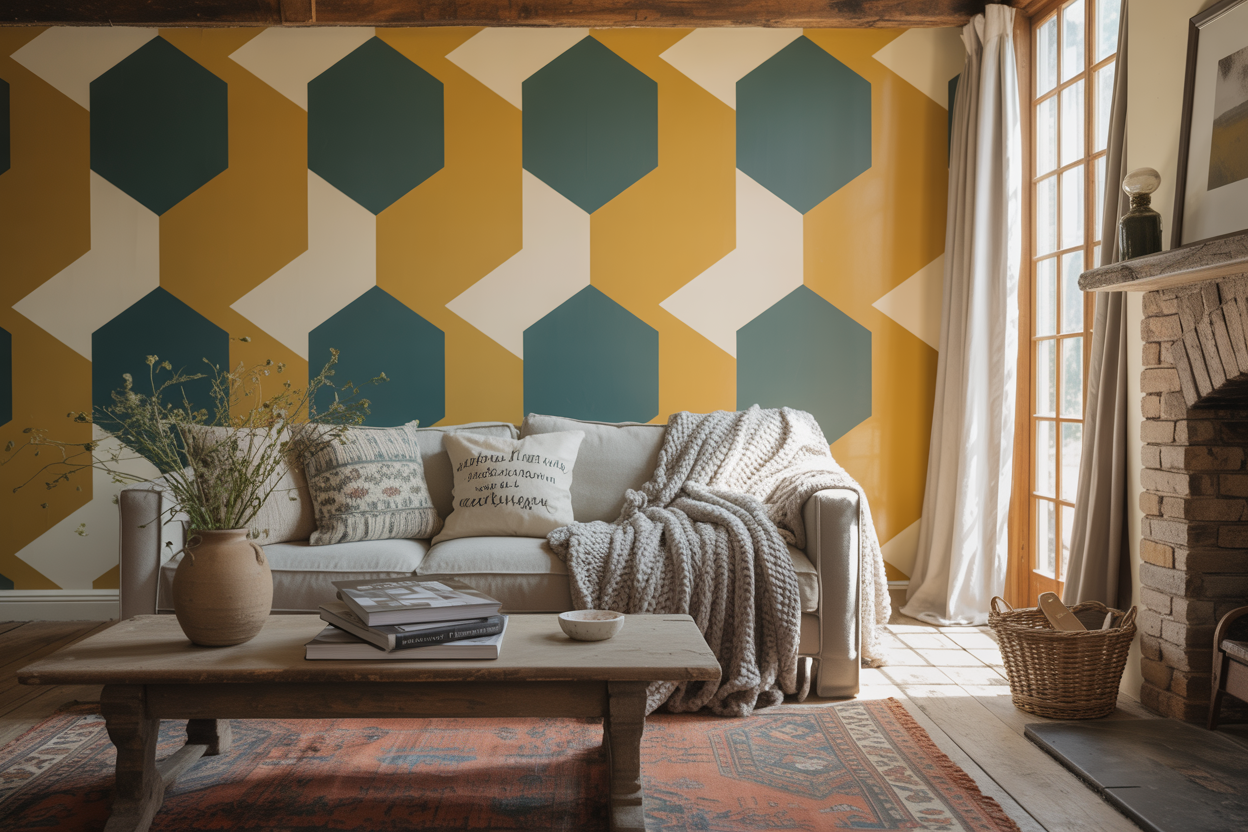
Your bold geometric patterns and neon color schemes might feel cutting-edge to you, but they’re sending buyers running for the hills. These funky wallpaper designs that seemed so trendy five years ago now scream “expensive renovation project” to potential purchasers.
The problem isn’t just aesthetic fatigue. Your psychedelic forest scene or abstract rainbow explosion creates a decorating nightmare for buyers trying to envision their own furniture and belongings in the space.
What you considered artistic expression, buyers see as a costly obstacle. They’re already calculating paint costs and wallpaper removal fees before they’ve finished touring your living room.
Unusual wallpaper designs work brilliantly when they match your personal taste perfectly. Unfortunately, the odds of finding another buyer who shares your love for metallic zebra stripes are remarkably slim.
Your statement wall makes such a loud statement that it drowns out everything else in the room. Buyers want to imagine their own memories being made in your space, not feel like they’re living inside someone else’s Pinterest board.
The most successful home sales feature neutral backdrops that let buyers project their own design dreams onto your walls.
18. Laminated wood cabinets with visible edges

Your kitchen cabinets with those telltale brown edges screaming “I’m fake wood!” are fooling absolutely no one. These visible laminate edges instantly date your kitchen and make buyers wonder what other shortcuts were taken.
Laminate cabinets can be stylish and durable when done right. The problem isn’t the material itself—it’s those unsightly exposed edges that announce their artificial nature from across the room.
Modern laminate installations use edge banding or seamless wrapping techniques. Your 1990s cabinets with their peeling brown strips look tired and cheap.
Buyers today expect clean lines and quality finishes. Those visible edges suggest poor craftsmanship and outdated installation methods.
Wood cabinets offer authentic texture and depth that laminate tries to mimic. When your laminate edges give away the game, you lose that premium appeal.
The fix involves either replacing with properly finished laminate or upgrading to solid wood. Half-measures like edge tape rarely look professional and often peel over time.
Your kitchen deserves better than these budget shortcuts that scream “contractor grade special.”
17. Ordinary ceiling fans with attached light kits

Your basic ceiling fan with an attached light kit screams “builder grade” louder than a contractor’s radio at 6 AM. These combo units typically feature cheap plastic globes and uninspiring blade designs that make your room look like a budget motel.
Modern ceiling fans from quality brands offer sleek alternatives, but the run-of-the-mill versions found in most homes lack style and sophistication. The attached light fixtures often cast harsh, unflattering light that does your space no favors.
Today’s buyers expect either statement-worthy ceiling fans or clean, minimalist lighting solutions. Your ordinary fan-light combo falls into design limbo, being neither functional enough nor attractive enough to impress.
The wobbly blades and buzzing motors common in cheaper models add insult to injury. Ceiling fan light kits can upgrade existing fans, but replacing dated units entirely makes more sense.
Consider pendant lights, track lighting, or sleek recessed fixtures instead. Your future buyers will appreciate the upgrade, and your rooms will finally shed that “apartment complex” aesthetic.
16. Clawfoot tubs (when worn or stained)

Nothing says “fixer-upper nightmare” quite like a stained clawfoot tub with chipped enamel and rusty feet. While clawfoot tubs can add vintage charm and sophistication when properly maintained, a worn specimen tells a different story entirely.
Buyers will take one look at yellow water stains, cracked surfaces, and corroded hardware and immediately start calculating restoration costs. The romantic notion of soaking in a vintage tub quickly vanishes when faced with the reality of extensive refinishing work.
Antique clawfoot tubs never go out of style when they’re pristine. But your battle-scarred relic screams “money pit” to potential buyers.
The irony is that these tubs can become beautiful focal points with proper care. However, most buyers won’t see past the surface damage to envision the potential underneath.
If your clawfoot tub has seen better decades, consider professional refinishing or replacement before listing. A shabby tub can single-handedly make your entire bathroom feel neglected and outdated.
15. Wallpaper Borders

While wallpaper borders are making a comeback according to design publications, many homebuyers still associate them with outdated 1990s décor. Your charming fruit-and-vine border might trigger flashbacks to their grandmother’s kitchen.
The problem isn’t necessarily the concept itself. Modern geometric versions can look fresh and sophisticated when done right.
However, most existing wallpaper borders in homes feature dated patterns like ivy, teddy bears, or country motifs. These scream “time capsule” to potential buyers who want move-in ready spaces.
Popular home additions that make buyers walk away often include dated decorative elements like these borders. They’re seen as something that needs immediate removal.
The adhesive used for borders can also damage paint underneath when removed. Buyers worry about the extra work and expense of stripping walls before redecorating.
If you love your wallpaper borders, enjoy them while you live there. Just be prepared to remove them before listing your home for maximum buyer appeal.
14. Faux wood paneling

Your home’s faux wood paneling screams 1970s louder than a disco ball. What once passed for sophisticated décor now makes buyers wonder if your avocado-green refrigerator is hiding around the corner.
Modern buyers expect authentic materials, not plastic pretending to be oak. The artificial grain patterns and uniform coloring fool absolutely no one today.
These panels create dark, cramped spaces that feel more like a basement rec room than a contemporary living area. Your carefully staged furniture can’t overcome the weight of outdated wall treatments.
While some manufacturers claim faux wood paneling is making a comeback, buyers still associate it with homes that need major updating. The association runs too deep to overcome easily.
Real wood accents work beautifully in modern homes, but the artificial stuff sends buyers running. If you’re stuck with existing panels, painting them in soft neutrals can lighten the space and reduce the dated appearance.
Smart sellers remove faux paneling entirely before listing. Your walls will thank you, and so will your sale price.
13. Chrome bathroom fixtures

Chrome fixtures dominated bathrooms for decades, but their reign is ending. Chrome bathroom fixtures have diversified opinions about their relevance among design experts today.
Your shiny chrome faucets and towel bars now scream “builder grade” to potential buyers. The ultra-reflective finish shows every water spot and fingerprint, making maintenance a constant battle.
Modern buyers gravitate toward warmer finishes like brushed gold, matte black, or oil-rubbed bronze. These alternatives feel more sophisticated and hide daily wear better than chrome’s mirror-like surface.
Chrome has been replaced as the go-to metal fixture in bathrooms, signaling a clear shift in buyer preferences. Your chrome fixtures make the entire bathroom feel dated, even if everything else is updated.
The good news? Swapping out chrome fixtures is relatively inexpensive and delivers immediate visual impact. Focus on faucets, cabinet hardware, and light fixtures first.
Keep one chrome element if you must – perhaps a vintage-style mirror frame. But ditch the matchy-matchy chrome suite that screams early 2000s tract home.
12. Corner Fireplaces
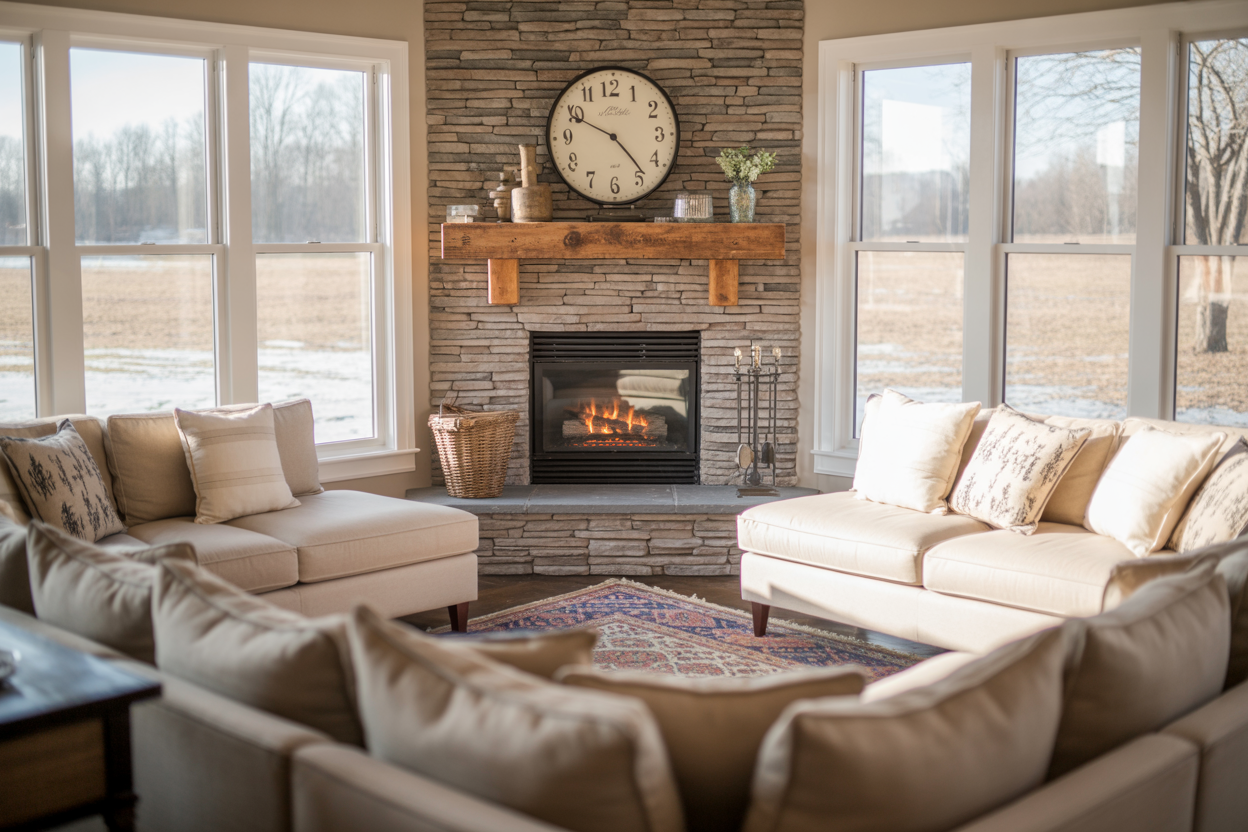
Corner fireplaces seemed like genius space-saving solutions when they first gained popularity. You could tuck warmth into an awkward corner and call it cozy. The reality? They’re design dead-ends that make buyers scratch their heads.
These angled oddities create furniture arrangement nightmares. Your sofa faces the corner while your back turns to the room’s natural flow. It’s like having a conversation with the wall while ignoring your guests.
Modern buyers prefer clean lines and flexible living spaces. Corner fireplaces lock you into one rigid furniture layout that rarely works well with contemporary design sensibilities.
The corner placement also limits your mantel decorating options. You’re stuck with awkward angles that make displaying artwork or family photos feel forced and unnatural.
Most corner fireplace ideas try to work around these inherent problems rather than solving them. Buyers recognize this design compromise immediately.
Today’s homeowners want statement fireplaces that anchor a room’s center wall. They prefer features that enhance rather than dictate their living space arrangement.
Your corner fireplace might have felt innovative once, but it now signals outdated thinking about how modern families actually live and entertain.
11. Fishing themed decor

Your fishing passion might be admirable, but fishing themed decor ranks among home additions that make buyers walk away. Most prospective buyers don’t share your enthusiasm for bass-shaped clocks and mounted fish collections.
The problem isn’t subtle nautical touches. It’s the overwhelming presence of fishing rods, tackle boxes, and fish-themed artwork throughout your home. What feels like a cozy cabin retreat to you screams “niche hobby” to buyers.
Your collection of fishing memorabilia creates a major hurdle during showings. Buyers struggle to envision their own lives in spaces dominated by your angling adventures. They see your personality instead of potential.
Fishing room decor works perfectly for dedicated spaces like man caves or workshops. However, extending this theme into main living areas significantly narrows your buyer pool.
Most buyers prefer neutral spaces they can personalize. Your fishing paradise becomes their decorating nightmare, requiring extensive changes to make the space feel like home.
Consider storing your fishing collections before listing. Let buyers focus on your home’s architectural features rather than wondering where they’ll put all those mounted trophies.
10. Wrought iron railings

Your ornate wrought iron railings might have looked stunning in 1995, but today’s buyers see them as heavy and outdated. Those elaborate scrollwork patterns and bulky designs clash with the clean lines modern homeowners crave.
Modern wrought iron railings focus on clean, simple shapes rather than ornate flourishes. Today’s buyers prefer sleek horizontal bars or minimalist vertical designs over your grandmother’s fancy curlicues.
The maintenance factor alone sends buyers running. Wrought iron requires regular painting and rust treatment, especially in humid climates. Your beautiful railings become an expensive headache when they start showing wear.
Black paint doesn’t help either. While wrought iron railings can work in various home styles, that traditional black finish feels heavy and dated against today’s lighter color palettes.
Consider modernizing your wrought iron railings with simpler designs and contemporary finishes. Better yet, swap them for glass panels or cable railings that won’t make buyers think they’re touring a medieval castle.
9. Mirrored walls in living rooms

Your living room’s mirrored wall might seem like a brilliant way to double the space and light. Unfortunately, most buyers see it as a glittery reminder of the disco era.
While mirrored walls are making a comeback in some design circles, they’re still polarizing features that can make buyers uncomfortable. The reflective surfaces create an overwhelming sensory experience that many find disorienting.
The maintenance nightmare alone sends buyers running. Every fingerprint, smudge, and dust particle becomes magnified across your wall of mirrors.
Most buyers envision themselves constantly cleaning these surfaces or dealing with the expensive removal process. The installation often involves adhesives that can damage drywall when removed.
Your mirrored wall also limits furniture placement options. Buyers struggle to imagine how their own pieces will look reflected endlessly across the room.
The lighting challenges compound the problem. Poor placement creates glare issues that make the space feel harsh rather than bright and airy.
Consider replacing mirrored walls with strategically placed accent mirrors instead. This gives you the light-reflecting benefits without the overwhelming effect that drives away potential buyers.
8. Frosted glass bathroom windows

Your bathroom’s frosted glass windows might seem like a practical privacy solution, but they’re actually dating your entire home. These cloudy barriers scream early 2000s design sensibility.
Frosted glass typically makes a bathroom feel smaller, creating that cramped, stuffy atmosphere buyers immediately notice. Instead of enhancing your space, these windows draw attention to everything that feels outdated about your bathroom.
The problem isn’t just aesthetics. While frosted glass provides privacy, it blocks your view entirely and creates a closed-in feeling that modern buyers find claustrophobic.
Today’s buyers want bathrooms that feel open and connected to nature. They prefer stylish privacy solutions like elegant shutters, smart glass, or decorative films that maintain views while offering discretion.
Your frosted windows also limit natural light quality. Modern alternatives allow crisp, clear light to flood your space while still protecting privacy when needed.
Consider this your wake-up call: those frosted bathroom windows aren’t adding value. They’re subtracting it by making your home feel trapped in the past.
7. Baroque light fixtures
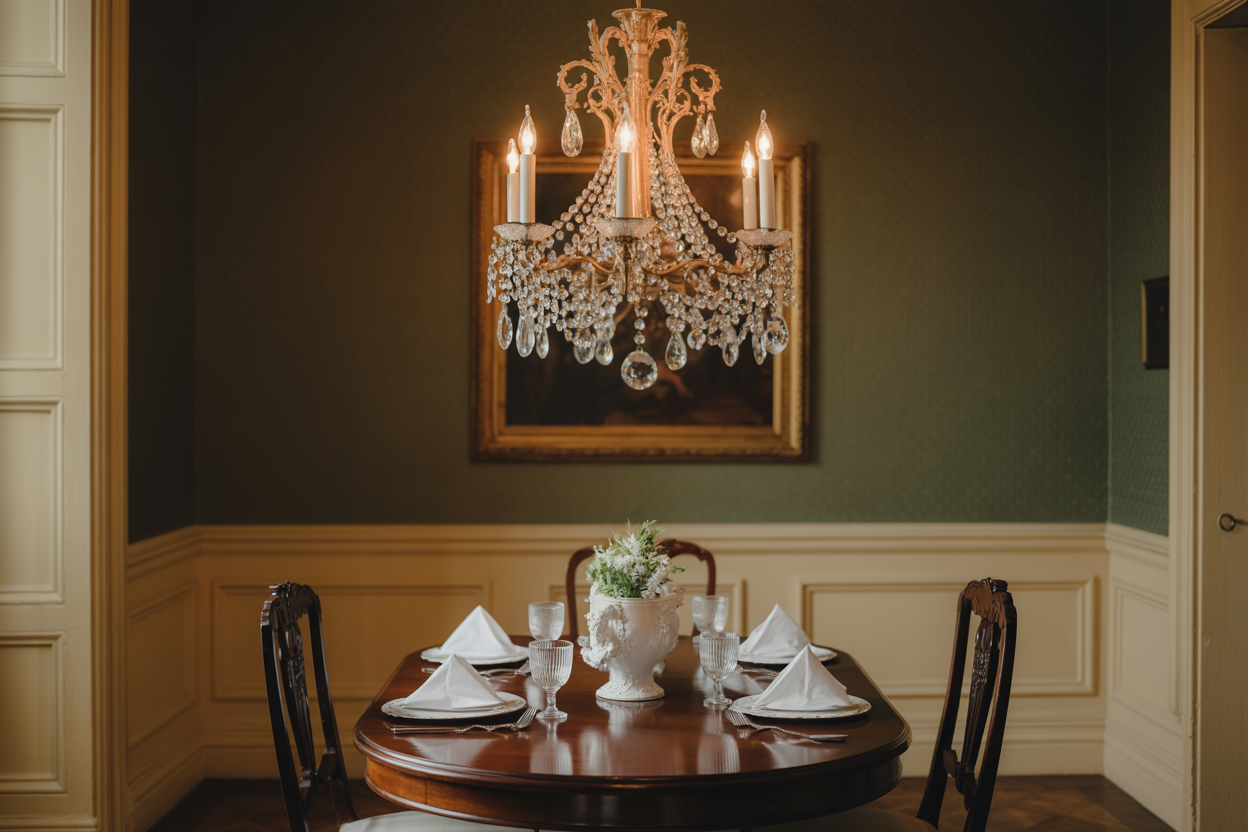
Your grand crystal chandelier with enough ornate flourishes to make Versailles jealous might impress dinner guests in 1985. Today’s buyers see it as an expensive eyesore that screams “time capsule.”
These elaborate fixtures demand attention in ways that modern buyers find overwhelming. The twisted metal arms, cascading crystals, and baroque ornamentation clash with contemporary design preferences for clean lines and minimalist aesthetics.
You’ll discover that baroque fixtures make rooms feel smaller and more cluttered. Their heavy visual weight dominates spaces rather than complementing them.
The maintenance factor alone sends buyers running. Those intricate details collect dust like magnets, requiring regular cleaning that most homeowners would rather avoid.
Modern buyers prefer lighting that blends seamlessly with their décor rather than commanding center stage. Your baroque showstopper becomes their immediate replacement project.
The irony is that these fixtures often cost thousands when installed. Yet they add zero value to your home’s appeal and may actually detract from it.
Simple, sleek lighting options that provide good illumination without the theatrical drama will serve your home’s marketability much better.
6. Over-the-top crown molding

Crown molding can add elegance to your home, but there’s a fine line between classy and gaudy. When you install ornate, multi-layered molding that dominates a room, you’ve crossed into outdated territory.
Today’s buyers prefer clean, simple lines over elaborate Victorian-era flourishes. Your 8-inch decorative molding with intricate carved details might have cost a fortune, but it screams “stuck in the past” to modern homeowners.
Contemporary crown molding ideas focus on sleek, minimalist designs that complement rather than overwhelm a space. Think simple profiles and clean edges instead of ornate rosettes and deep carvings.
The problem isn’t crown molding itself—it’s the excessive approach. When your ceiling trim becomes the room’s focal point, you’ve gone too far. Buyers want architectural details that enhance the space, not dominate it.
Consider that crown molding with integrated features like hidden curtain rods appeals to modern tastes. Function paired with subtle style wins over pure decoration every time.
Your elaborate molding makeover might need a makeover itself before listing your home.
5. Fake brick wallpaper

You might think faux brick wallpaper adds character to your home, but buyers see it differently. They view it as a cheap shortcut that screams “I couldn’t afford real brick.”
The peel-and-stick variety is particularly problematic. It often bubbles, peels at corners, and shows obvious seams that destroy any illusion of authenticity.
While textured brick wallpaper options exist, they still can’t replicate the natural variations and depth of real masonry. Your accent wall ends up looking like a movie set prop.
Buyers worry about removal difficulty too. Nobody wants to inherit someone else’s questionable wallpaper choices, especially when it involves scraping textured surfaces.
The trend toward faux brick peaked years ago and now feels dated. What seemed trendy then now appears as obvious as wearing last decade’s fashion.
If you want that industrial look, consider exposed brick alternatives like brick veneer or simply embrace smooth walls. Your future buyers will thank you for not making them budget for wallpaper removal.
4. Tile Countertops

Tile countertops might seem like a budget-friendly way to update your kitchen, but they’re sending the wrong message to potential buyers. Those grout lines that looked so charming in 1985 now scream “maintenance nightmare” to anyone walking through your home.
The problem isn’t the tile itself—it’s those inevitable grout lines that collect every spill, crumb, and cooking mishap. Tile countertops are difficult to clean, which many buyers find off-putting when they imagine themselves scrubbing away at stubborn stains.
Your beautiful ceramic or stone tiles become secondary to the visual chaos of all those intersecting lines. Buyers see extra work rather than kitchen charm.
While some designers argue that tile countertops are making a comeback, the reality is that most homebuyers prefer seamless surfaces. They want to wipe down counters quickly, not navigate around dozens of grout lines.
If you’re determined to keep tiles, consider large-format options that minimize grout lines. Better yet, save yourself the headache and opt for quartz or granite slabs that buyers actually want to cook on.
3. Wall-to-wall shag carpeting

Your groovy 1970s shag carpet might have been the height of sophistication back in the day, but it’s now sending buyers running for the hills. Those long, luxurious fibers that once screamed “sophisticated living” now whisper “decades of trapped dust and pet dander.”
Modern buyers take one look at wall-to-wall shag and immediately start calculating replacement costs. The deep pile that once felt so plush underfoot now looks like a cleaning nightmare waiting to happen.
While wall-to-wall carpeting is making a comeback in some circles, shag remains firmly stuck in the past. Today’s carpet trends favor low-pile options in neutral tones that won’t overwhelm potential buyers.
Your avocado-green shag might hold sentimental value, but it’s likely costing you serious money when selling. Buyers see outdated flooring as an immediate project, not a charming vintage feature.
The maintenance requirements alone make shag carpeting a hard sell. Deep cleaning requires special equipment, and regular vacuuming becomes an Olympic sport when you’re trying to extract debris from those twisted fibers.
2. Jacuzzi Tubs

Your dream bathroom centerpiece from the 1990s has become today’s maintenance nightmare. Those swirling jets that once promised spa-like luxury now collect soap scum and bacteria in places you can’t reach.
Modern buyers see Jacuzzi tubs as outdated novelty items that don’t fit their lifestyle. They take forever to fill, waste enormous amounts of water, and rarely get used after the initial novelty wears off.
The cleaning requirements alone send potential buyers running. You’ll need special cleaners for the jet system, plus regular maintenance to prevent buildup in the internal plumbing.
Space is another major issue. These oversized tubs dominate bathrooms, leaving little room for the walk-in showers that buyers actually want. Jacuzzi tubs are making buyers walk away rather than adding value to your home.
Your money would be better spent on a sleek soaking tub or spacious shower with multiple heads. These alternatives offer relaxation without the maintenance headaches that make buyers cringe.
1. Popcorn Ceilings

Your grandmother might have thought popcorn ceilings were the height of sophistication in 1975, but today’s buyers see them as a design disaster waiting to happen.
Popcorn ceilings have fallen out of favor due to health concerns, changing design trends, and maintenance challenges. What once hid imperfections now screams “I haven’t updated my home since Reagan was president.”
The texture collects dust, cobwebs, and cooking odors like a magnet. Try painting over one and you’ll quickly understand why buyers calculate removal costs before making offers.
Homes with popcorn ceilings can be harder to sell because buyers often see them as an outdated feature that requires removal. Many real estate professionals recommend removing popcorn ceilings to increase home value.
The asbestos concerns in older installations add another layer of complexity. Even if yours are asbestos-free, buyers don’t want to deal with the hassle of testing and removal.
Popcorn ceilings are rarely used in new builds today because of their negative reputation and ability to decrease home value. Your textured ceiling isn’t charming or vintage—it’s just old.






